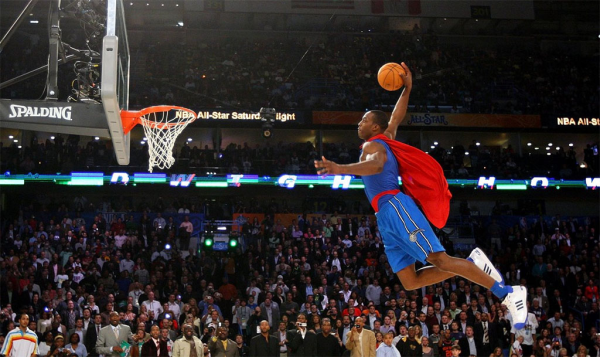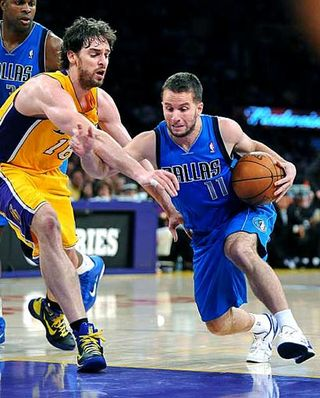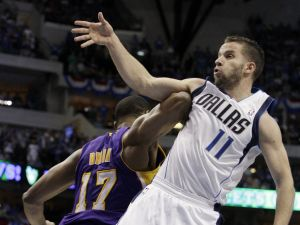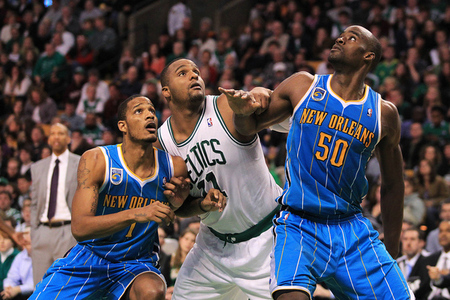by Art Horne

Just recently Dr. Stuart McGill, Jordan Andersen, and I published an article in the Journal of Strength and Conditioning Research examining the link between traditional pre-season strength, fitness, and sports medicine testing to overall on-court basketball performance and injury resilience throughout the course of two collegiate basketball seasons. Although I would be the first to admit that there are some clear limitations to this study (number of participants for example), key performance predictors (points scored, ability to rebound, block shots, etc) were NOT associated with traditional strength or performance measures so often pursued in collegiate basketball strength programs.
Below is a summary of our most interesting findings followed by my thoughts and experiences from the last decade of both training and caring for the collegiate basketball athlete. The two should not be confused as one and the same, although many of the findings in this study only strengthen my position when it comes to training and caring for the basketball athlete. Findings are in bold, with narrative following in normal text.
1. A “stiffer” torso leads to better performance
This goes without saying.
This is most evident when watching elite vs. novice athletes performing lateral shuffling followed by a change of direction. In general, elite athletes will be able to “stiffen” their core/spine quickly providing a stable base from which their limbs may generate force against in preparation for the sudden stop and change in direction. Novice athletes tend to take much more time to slow down and reverse directions. This is a major contributor to the decreased lane agility times seen in elite athletes (see #4 below). The ability to stiffen quickly however is not solely responsible for improved change of direction time and increased performance. The ability to “relax” this same musculature is much more important – yet rarely trained in modern performance programs.
This phenomenon has been studied at length by Leo Matveyev, one of the leading Russian sports scientist where he found an underlying theme among the top level of sports mastery in the Russian system of classification – those that achieved the highest level also had the highest speed of muscle relaxation. The speed of relaxation following muscular contraction was nearly 200 percent faster than lower level athletes, and those that were classified just below “master of sport” demonstrated relaxation times of about 50% slower! (Dietz, 2012)
These findings mirror McGill’s work where he examined elite MMA fighters as they struck a punching bag and discovered a “double-peak” in muscle activity where initial muscle contraction was quickly followed by relaxation as the striking limb traveled through the air, followed again but a rapid increase in muscular tension as the limb contacted the bag.
“Muscle activation using electromyography and 3-dimensional spine motion was measured. A variety of strikes were performed. Many of the strikes intend to create fast motion and finish with a very large striking force, demonstrating a "double peak" of muscle activity. An initial peak was timed with the initiation of motion presumably to enhance stiffness and stability through the body before motion. This appeared to create an inertial mass in the large "core" for limb muscles to "pry" against to initiate limb motion. Then, some muscles underwent a relaxation phase as speed of limb motion increased. A second peak was observed upon contact with the opponent (heavy bag). It was postulated that this would increase stiffness through the body linkage, resulting in a higher effective mass behind the strike and likely a higher strike force. Observation of the contract-relax-contract pulsing cycle during forceful and quick strikes suggests that it may be fruitful to consider pulse training that involves not only the rate of muscle contraction but also the rate of muscle relaxation.” (McGill, 2010)
In personal conversations with McGill we both agree that this “double-peak” phenomenon, although not yet measured in basketball athletes, also occurs in elite level point guards during a cross-over maneuver as they blow by the opposition on the way to the basket and is a must at the highest level of basketball competition – think Derrick Rose, Chris Paul and JJB. I first witnessed this contract-relax-contract mastery at Northeastern University while working with a young kid from Puerto Rico named Jose Juan Barea as he sliced up defender after defender on his way to becoming an NBA champion with the Dallas Mavericks most recently in 2011.


The LA Lakers and Miami Heat found out firsthand just how important spine stiffness and relaxation is during the 2011 NBA Playoffs - courtesy of one JJB.
Torso stiffness is paramount in the game of basketball and a must for those looking to change direction quickly on their way to the basket but also for those absorbing repeated bouts of body blows down on the blocks.
2. More hip range of motion was linked to better performance
Appropriate hip range of motion is another no-brainer. Its impact on low back and anterior knee pain are well documented in the literature from an injury perspective and should be evaluated both on initial contact with your athletes but also periodically throughout the competitive season as a simple check to ensure healthy tissue qualities and cooperation from joints above and below (tibio-femoral rotation along with SI position).
3. Bench Press correlated with blocks per game (r=.0.59)
We’ve all beaten the Kevin Durant bench press story to death and know that his inability to push 185 pounds off his chest during the NBA combine hasn’t impacted his ability to perform on the court. Now, I’m not ready to suggest that basketball athletes need to bench press, but if you’ve ever played basketball or at least watched a game, you know that the contribution from the upper body is immense when it comes to establishing position on the blocks and fighting through screens. Although the actual “block” needs minimal upper body strength, the ability to position yourself for said block usually takes some pushing and shoving – both of which are aided by some impressive upper body strength.
4. Long Jump distance and Lane Agility Test were the most closely linked performance tests to actual performance
- Long Jump scores correlated with: minutes, rebounds, and blocks per game
- Lane Agility time correlated negatively with minutes played, points, assists and steals per game (meaning that a faster time was linked to more performance)
- Vertical Jump did not correlate with any variable below
- Long jump is related to one’s ability to produce force into the ground and forward acceleration (Holm, 2008)
- Vertical jump conversely is related to top end speed (and of course those highlight dunks on ESPN Sports Center)
- Basketball courts measure 94 feet long from end to end. Plays that result in scoring or prevent scoring almost always take place within the half court, with the majority of those occurring within the 3-point arc. Therefore, if you were to choose between an athlete with incredible top end speed or incredible acceleration abilities, knowing that the majority of his productive (scoring or preventing scoring) minutes will take place within the 3-point arc, which would you choose? My money is with the acceleration guy! Although highflying dunks are popular in warm-up and during your morning Sports Center show, the rate at which this quality is utilized during an actual game is far less than qualities associated with acceleration, and as such, traditional strength training programming must reflect this end.
- If you have to choose, pick the guy with a huge horizontal jump – he’ll be able to cover more space more quickly over short distances and will be more valuable within the context of the game overall.
5. Back injured group had, on average played more games and more minutes per game and had a greater number of rebounds and steals per game but NOT more assists or points scored.
Only 5 injures were observed – those getting injured however played many more minutes per game, had double the rebounds and fivefold more blocks.

Oakafur was a beast in college, but battling bodies like Big Baby Davis' will take a toll on even the healthiest of backs.
Athletes that play more minutes simply have a greater chance of getting injured due to the higher exposure rate – plain and simple. What’s interesting however is the number of rebounds and blocks tallied by those suffering more injuries, suggesting a willingness to get physically involved in the trenches and the not-so-glamorous side of the game. These athletes in my opinion also have a much higher general risk behavior and are more often willing to take a charge or dive after a loose ball. These are the guys that coaches and teammates love for their hustle play but usually end up injured more often. Because of their increased opportunity for injury, these athletes should be evaluated more often throughout the season through physical examination, subjective questionnaires or other means such as HRV with appropriate recovery and treatment methods applied in an effort to keep nagging pains from becoming a missed games due to injury.
The next article will focus on how we can interpret these very preliminary results and address deficiencies in your athletes this fall prior to the start of the season in both the weight room and sports medicine clinic.
See the leaders in Sports Medicine and Performance at the BSMPG 2013 Summer Seminar including Stuart McGill, Marco Cardinale, Fergus Connolly and Adriaan Louw.
References
Dietz C, Peterson B. Triphasic Training: A systematic approach to elite speed and explosive strength performance. 2012.
Holm DJ, Stalbom M, Keogh JWL, Cronin J. Relationship between the kinetics and kinematics of a unilateral horizontal drop jump to sprint performance. J Strength Cond Res. 2008 Sept:22(5):1589-1596.
McGill SM, Chaimber JD, Frost DM, Fenwick CM. Evidence of double peak in muscle activation to enhance strick speed and force: an example with elite mixed martial arts fighters. J Strength Cond Res. 2010 Feb:24(2):348-57.



